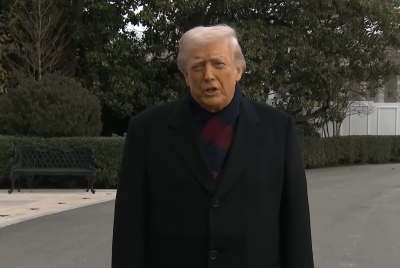What is an executive order, are they legally binding and how many can a president sign?
Donald Trump signed a flurry of orders in the first week of his presidency.

Donald Trump has signed a raft of executive orders in the first week of his presidency, from ordering the construction of a border wall between the US and Mexico to increasing the number of immigration enforcement officials who can carry out deportations.
On Thursday, a leaked draft of an order obtained by the New York Times revealed the Trump administration could reopen George W. Bush-era "black site" prisons, which would allow the CIA to brutally interrogate terror suspects overseas.
Speaking to ABC News, Trump said he believes waterboarding works as an interrogation technique, stating "we have to fight fire with fire".
In response, Senator John McCain warned he would prevent the president from bringing back torture.
"The president can sign whatever executive orders he likes," McCain said in the statement. "But the law is the law. We are not bringing back torture in the United States of America."
So what exactly is an executive order – and how binding are they?
An executive order is an official document signed by the president that decides government policy. It can have the same power as a federal law under certain circumstances and it is legally binding. Executive orders are published in the Federal Register, the official journal of the US government that contains agency rules and proposals.
Executive orders cannot overturn a law passed by Congress. Although there are no proper checks or balances on executive orders before they are signed, Congress has the power to remove funding for policies.
Orders given by previous presidents can be overturned by their successor. For example, Trump this week signed an order reinstating the Mexico City policy to block US funding to international NGOs that provide reproductive services. Introduced in 1984 by Ronald Reagan, it was repealed under Bill Clinton, reinstated by George W. Bush and repealed once against by Barack Obama.

How binding are executive orders?
Congress can pass a new law to override an executive order, subject to a presidential veto, but it needs to have a 2/3 majority in both the Senate and the House of Representatives.
On rare occasions, executive orders can be thrown out by judiciary if deemed to overstep the breach the realms of presidential authority. This happened in 1952, when President Harry Truman ordered the government to seize control of steel mills to keep production going during a strike at the time of the Korean War.
In 1995, the judiciary threw out an order issued by Bill Clinton which stopped the government entering into contracts with organisations that employ replacements for workers on strike.
How many executive orders can a president sign?
A president can use as many orders as they wish. The Congressional Research Service states there is no direct "definition of executive orders, presidential memoranda, and proclamations in the US Constitution" and there is "no specific provision authorising their issuance."
Every US president has used executive orders. One of George Washington's first orders was a proclamation about the Thanksgiving holiday.
President Roosevelt issued the most executive orders, issuing 3,728 orders between 1933 and 1945 during the Great Depression and the Second World War.
How many orders did Barack Obama sign?
During his eight years as president, Obama signed 277 executive orders. George W. Bush signed 291.
According to data from the Pew Research Center, Obama averaged fewer executive orders per year in office than any American president in 120 years.
What is an executive action?
An executive action is not the same as an executive order. Actions are informal proposals or moved made by the president, which can include proclamations and directives, but are not usually legally binding. Executive actions that set policy can be overturned by the courts or by legislation passed by Congress.
Throughout history, presidents have favoured executive actions over orders for controversial issues, such as gun control.
What is an executive memorandum?
An executive memorandum is similar to an executive order because it carries legal weight. Unlike orders, memoranda are not published in the Federal Register. While executive orders are numbered, memoranda are not, which makes them harder to count.
© Copyright IBTimes 2025. All rights reserved.






















